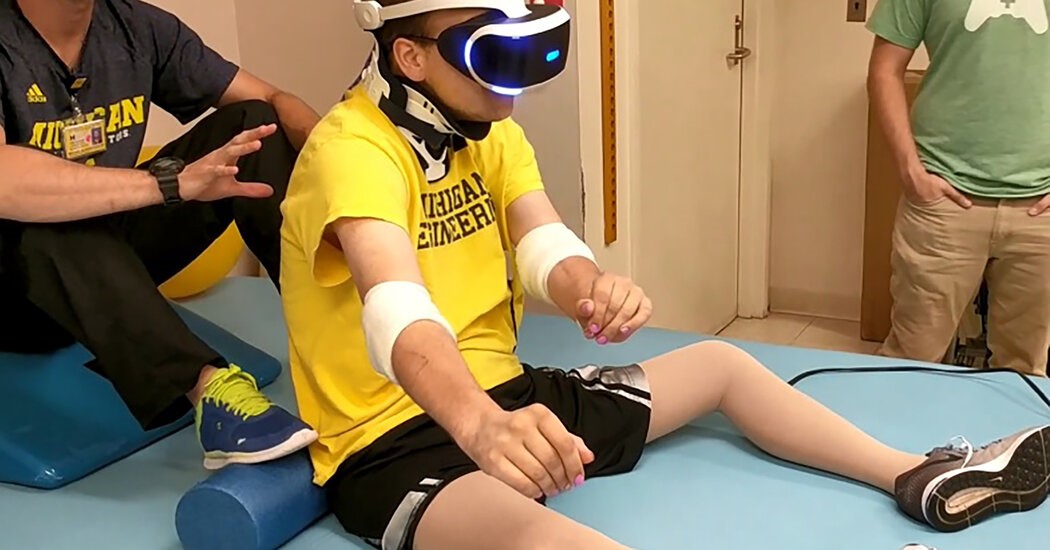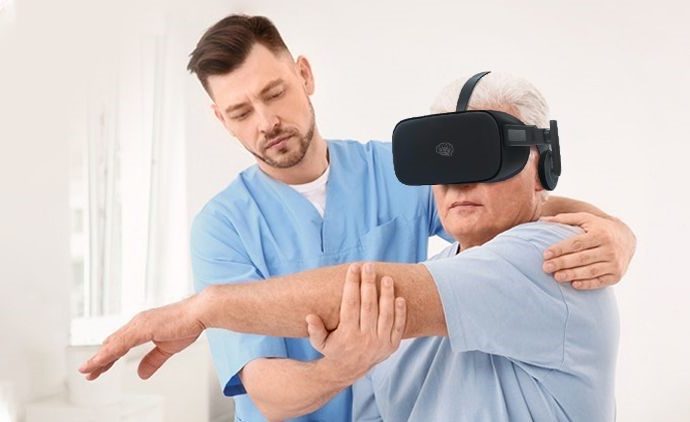In recent years, Virtual Reality (VR) has transcended its origins in entertainment and gaming to become a revolutionary tool in various fields, including healthcare. One of the most promising applications of this technology is in pain management. Virtual Reality Pain Management is emerging as an innovative and effective method to alleviate discomfort and improve the
In recent years, Virtual Reality (VR) has transcended its origins in entertainment and gaming to become a revolutionary tool in various fields, including healthcare. One of the most promising applications of this technology is in pain management. Virtual Reality Pain Management is emerging as an innovative and effective method to alleviate discomfort and improve the quality of life for patients suffering from both acute and chronic pain.
Understanding Virtual Reality Pain Management
Virtual Reality Pain Management involves the use of VR technology to create immersive environments that distract patients from their pain. By engaging the senses and focusing attention on virtual experiences, VR can significantly reduce the perception of pain. This technique leverages the brain’s natural ability to modulate pain through cognitive and emotional engagement.
The Science behind VR and Pain Perception
Pain is not just a physical sensation but a complex experience influenced by psychological and emotional factors. The brain plays a crucial role in how pain is perceived and processed. Virtual Reality Pain Management works by diverting the brain’s attention away from pain signals. When a patient is immersed in a VR environment, the brain’s focus shifts to the virtual world, reducing the attention it pays to pain.
Research has shown that VR can activate the brain’s pain modulation pathways, similar to how traditional pain relief methods work. By stimulating the brain’s reward centers and releasing endorphins, VR can create a sense of well-being and reduce pain perception.
Applications of Virtual Reality Pain Management
Acute Pain Management
One of the most common applications of Virtual Reality Pain Management is in the treatment of acute pain. This includes pain experienced during medical procedures such as wound care, injections, or dental work. VR can serve as a powerful distraction, helping patients endure these procedures with less discomfort.
For example, pediatric patients undergoing painful treatments, such as burn wound care, have shown significant reductions in pain and anxiety when using VR. The immersive nature of VR can transport children to calming environments, such as a beach or a forest, making the medical experience less traumatic.
Chronic Pain Management
Chronic pain, which persists for months or even years, can be debilitating and challenging to manage. Traditional pain management methods, such as medication, often come with side effects and limited effectiveness. Virtual Reality Pain Management offers a non-pharmacological alternative that can complement existing treatments.
Patients with conditions like fibromyalgia, arthritis, and neuropathic pain have reported improvements in pain levels and overall well-being after using VR. By providing a mental escape and promoting relaxation, VR can help break the cycle of chronic pain and improve patients’ quality of life.
Postoperative Pain Management
Postoperative pain is a significant concern for patients recovering from surgery. Effective pain management is crucial for a smooth recovery process and to prevent complications. Virtual Reality Pain Management has shown promise in reducing postoperative pain and the need for opioid medications.
Studies have demonstrated that patients who use VR after surgery experience lower pain levels and shorter hospital stays. By providing an engaging distraction and promoting relaxation, VR can enhance the recovery process and reduce the risk of opioid dependence.
Labor Pain Management
Childbirth is a physically and emotionally intense experience, often accompanied by significant pain. Virtual Reality Pain Management is being explored as a tool to help women manage labor pain. VR can provide a calming and immersive environment that helps women cope with contractions and reduce anxiety.
Preliminary studies have shown that women who use VR during labor report lower pain levels and a more positive birthing experience. By offering a non-invasive and drug-free pain relief option, VR has the potential to transform labor pain management.

Picture by: Yandex.com
Benefits of Virtual Reality Pain Management
Non-Invasive and Drug-Free
One of the most significant advantages of Virtual Reality Pain Management is that it is a non-invasive and drug-free approach. Unlike medications, VR does not carry the risk of side effects or addiction. This makes it a safe and appealing option for patients of all ages.
Personalized Pain Relief
VR can be tailored to meet the specific needs and preferences of each patient. Whether it’s a calming nature scene, an interactive game, or a guided meditation, VR experiences can be customized to provide the most effective pain relief for each individual.
Accessibility and Convenience
With the advancement of VR technology, VR headsets are becoming more affordable and accessible. Patients can use VR devices in various settings, including hospitals, clinics, and even at home. This convenience makes it easier for patients to incorporate VR into their pain management routine.
Complementary to Traditional Treatments
Virtual Reality Pain Management can be used alongside traditional pain management methods, such as medication, physical therapy, and cognitive-behavioral therapy. By combining VR with other treatments, patients can achieve more comprehensive and effective pain relief.
Challenges and Future Directions
Technical Limitations
While Virtual Reality Pain Management holds great promise, there are still technical limitations to address. VR devices need to be comfortable and user-friendly, especially for patients with limited mobility or dexterity. Ensuring high-quality and realistic VR experiences is also essential for maximizing the effectiveness of pain relief.
Research and Validation
Although many studies have shown positive results, more research is needed to fully understand the mechanisms and long-term effects of VR on pain management. Large-scale clinical trials and standardized protocols are necessary to validate the efficacy and safety of VR as a pain management tool.
Integration into Healthcare Systems
Integrating Virtual Reality Pain Management into mainstream healthcare requires collaboration between healthcare providers, technology developers, and policymakers. Establishing guidelines, training programs, and reimbursement models will be crucial for widespread adoption.
Conclusion
Virtual Reality Pain Management is transforming the landscape of healthcare by offering a novel and effective approach to pain relief. By harnessing the power of immersive technology, VR can provide a mental escape from pain, reduce the need for medication, and improve patients’ quality of life. As research and technology continue to advance, Virtual Reality Pain Management has the potential to become a standard component of pain management protocols, offering hope and relief to millions of patients worldwide.
















